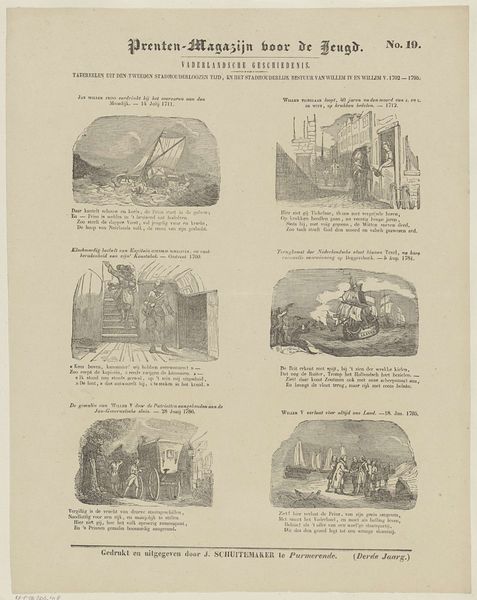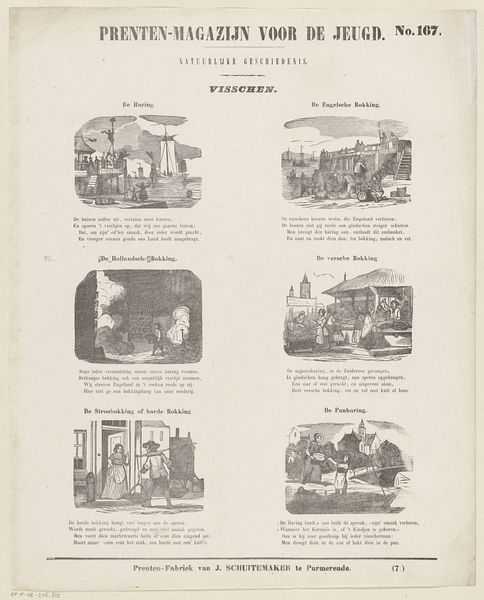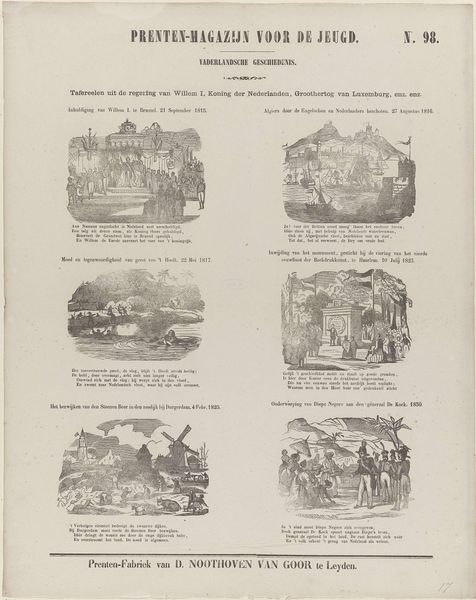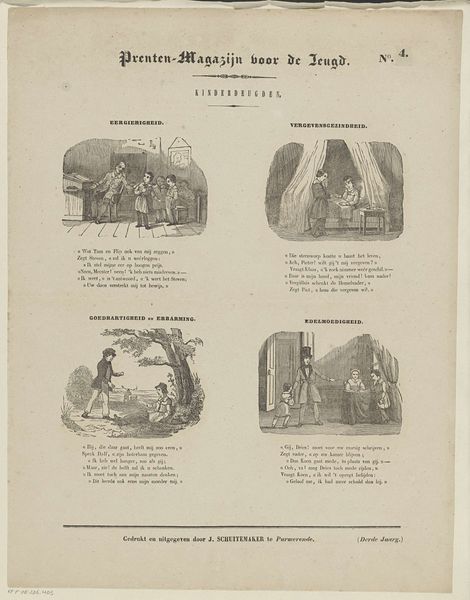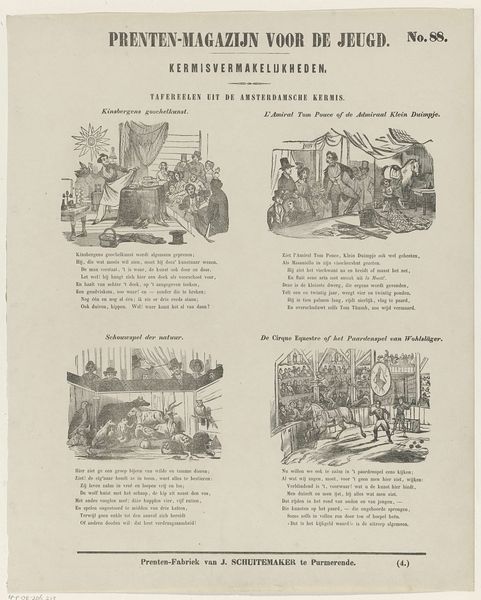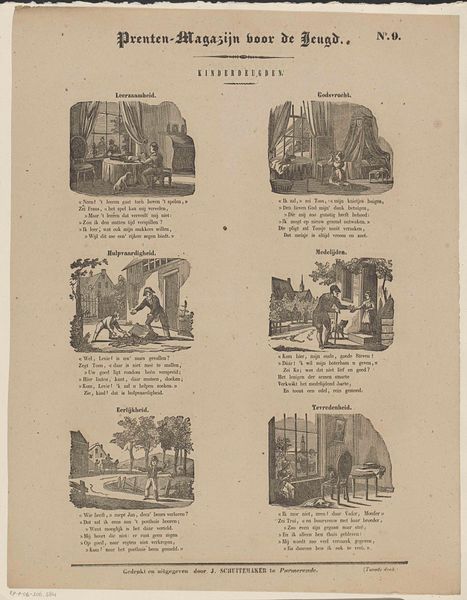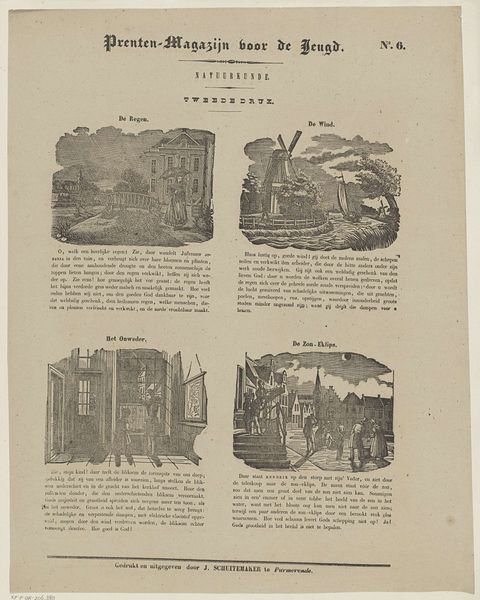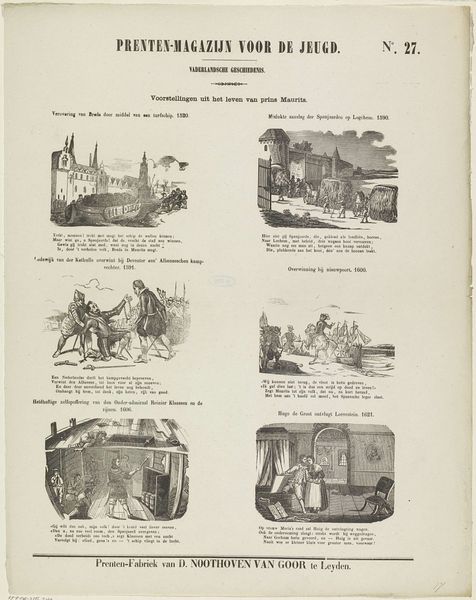
print, paper, engraving
#
narrative-art
#
dutch-golden-age
# print
#
paper
#
genre-painting
#
engraving
Dimensions: height 412 mm, width 326 mm
Copyright: Rijks Museum: Open Domain
Editor: This print, titled "Schelpdieren," or "Shellfish" in English, created in 1850 by Jan Schuitemaker, is a page from a children's magazine. I notice several scenes, almost like comic panels, each depicting different shellfish and stories related to them. What do you see in this piece? Curator: Immediately, I’m drawn to how the seashells themselves act as little stages. Think of how shells often symbolized pilgrimage, or even a personal journey in 19th-century art. Here, each panel becomes a container of sorts, a vignette showcasing the natural world, yes, but also hinting at larger narratives. What connections do you see between the different panels, each dedicated to a specific type of shellfish? Editor: Well, I see that some panels show people interacting with the shellfish, like the pearl oyster divers or the scene with people using a giant clam as shelter. Is that intended to illustrate human resourcefulness, or something else? Curator: It's more than mere resourcefulness; these images speak to humanity's intricate relationship with nature. Consider the nautilus, depicted as a small ship. The shell becomes a vessel, a tool, even a metaphor for exploration. We tend to project human stories and meanings onto these natural forms. But what is interesting here, is the intent to edify a youthful audience. Is it knowledge, or a moral message? Editor: That makes me see the print in a new way. It's not just about the shells, but about what they represent culturally. Curator: Exactly. It’s about the continuous exchange of meaning, how an object transforms into a vessel for knowledge, belief and, in this case, education.
Comments
No comments
Be the first to comment and join the conversation on the ultimate creative platform.

